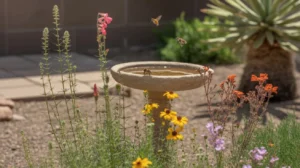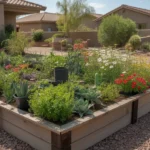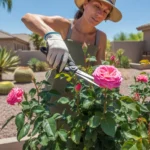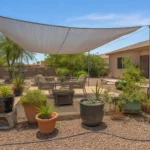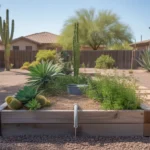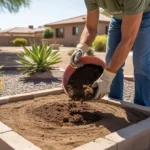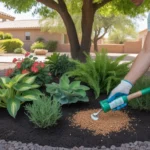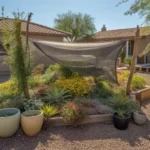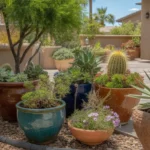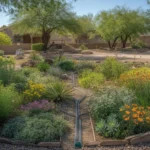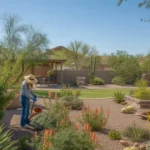Pollinator gardens are a beautiful and beneficial addition to any Gilbert yard. By incorporating native plants that attract bees, butterflies, hummingbirds, and other pollinators, you can create a haven that supports the local ecosystem while enhancing your outdoor space. With some thoughtful pollinator garden design, your Gilbert backyard can come alive with color, movement, and the gentle hum of happy insects. Here are some ideas to get you started.
Choose a Sunny Spot for Your Pollinator Patch
When planning your pollinator garden design, the first step is selecting the right location. Most native plants that attract pollinators thrive in full sun, so look for a bright, open area that receives at least 6 hours of direct sunlight per day. Avoid placing your garden in heavily shaded spots under trees or near tall structures that block the light.
If your yard is on the smaller side or lacks open ground, consider creating a pollinator container garden instead. Large pots, raised beds, or even repurposed items like old wheelbarrows can make excellent homes for pollinator-friendly plants. Just be sure to place your containers in the sunniest spot available.
Select a Variety of Native Plants
The key to a successful pollinator garden is incorporating a diverse mix of native plants that provide nectar and pollen throughout the growing season. By choosing species that are naturally adapted to Gilbert’s desert climate, you’ll create a low-maintenance oasis that’s both beautiful and eco-friendly.
Some top native plant choices for Gilbert pollinator gardens include:
- Desert Marigold (Baileya multiradiata)
- Chuparosa (Justicia californica)
- Parry’s Penstemon (Penstemon parryi)
- Fairy Duster (Calliandra eriophylla)
- Goodding’s Verbena (Glandularia gooddingii)
- Butterfly Weed (Asclepias tuberosa)
Aim to include a variety of plant types, such as flowering perennials, shrubs, and even a few small trees if space allows. By providing diverse flower shapes, sizes, and colors, you’ll attract a wider range of pollinators to your Gilbert garden.
Provide Water and Shelter
In addition to nectar-rich blooms, pollinators also need sources of clean water and places to rest or nest. Incorporate a shallow birdbath or fountain into your garden design, making sure to include a few stones or sticks for insects to land on safely. Keep the water fresh and free of chemicals to ensure your pollinator pals stay healthy.
You can also create shelter for pollinators by leaving some areas of your yard a bit untamed. Let a small patch of native grass or a corner of your garden grow wild to provide nesting sites for bees and caterpillar host plants for butterflies. If you’re feeling crafty, try making a simple bee hotel by bundling hollow stems or drilling holes in a block of untreated wood.
Design with Drifts and Groupings
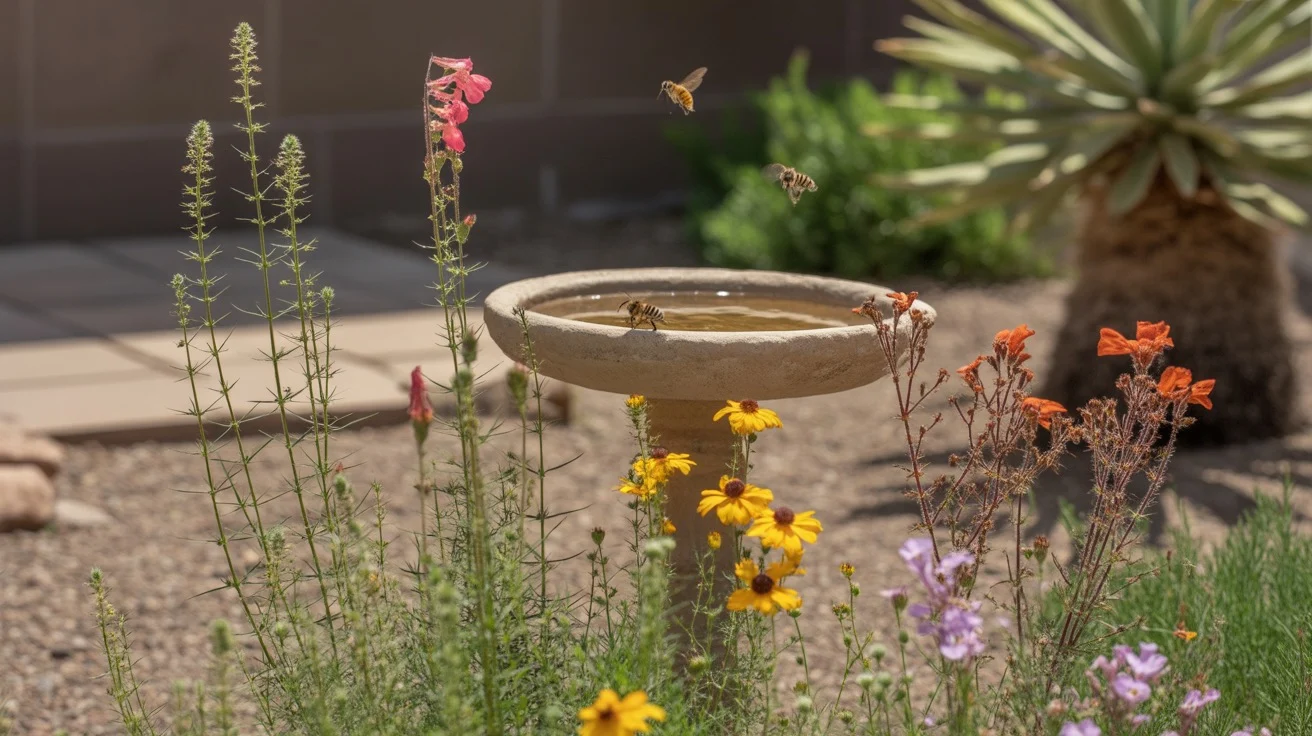
When it comes to pollinator garden design, think in terms of drifts and groupings rather than single specimens. Planting larger swaths of the same species together makes it easier for pollinators to spot their favorite blooms and reduces the energy they need to expend flitting from flower to flower.
Create sweeping curves and flowing lines with your plantings to mimic the natural movement of pollinators through the landscape. Mix in some striking focal points, like a bright patch of penstemon or a stately desert milkweed, to draw the eye and create visual interest. By designing with pollinators in mind, you’ll craft a garden that’s both functional and beautiful.
Maintain Your Pollinator Paradise
Once your pollinator garden is established, a bit of regular maintenance will keep it thriving for years to come. Water deeply but infrequently to encourage deep root growth and resilience, and avoid using pesticides or herbicides that can harm beneficial insects. Prune spent blooms to encourage repeat flowering, but leave some seedheads in place to feed birds and provide winter interest.
As your pollinator garden grows and evolves, take time to observe the fascinating creatures it attracts. From the tiniest native bees to the most majestic monarch butterflies, each pollinator plays a vital role in Gilbert’s ecosystem. By creating a haven for these important insects in your own backyard, you’re not only enhancing your outdoor space but also supporting the health and biodiversity of your local community.
With these pollinator garden design ideas as a starting point, you can create a stunning and sustainable oasis right in your Gilbert yard. So roll up your sleeves, get planting, and enjoy the buzzing, fluttering magic of your very own pollinator paradise!

